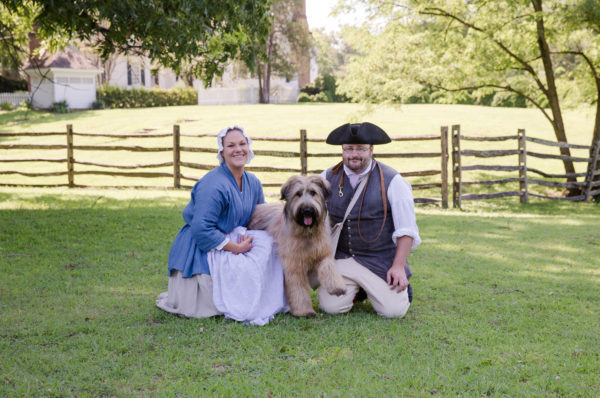
For a man said to hate dogs, Thomas Jefferson certainly accumulated more than his share of Briards. After his stint in Paris, he returned to America with three of them (one of them, “Bergère,” whelped a litter of two during the voyage home on the ship, Clermont ). Jefferson imported another in 1790, and in 1806 and 1809, had the Marquis de Lafayette send three more to Monticello. That’s a lot of sheepdogs for a place that had very few sheep.
It’s complicated.
America had few large flocks of sheep because farmers were hampered by the Wool Act, a law that prohibited the export of colonial wool. There was also a hefty tax on sale of woolen goods, so keeping a lot of sheep was pointless. Jefferson being Jefferson, however, was a man always looking ahead, and he knew the day would come when America would win its independence and need a wool industry. Best to get a jump on having the best sheepdogs in the world – but why Briards?
Jefferson was a great admirer of the French naturalist the Comte de Buffon, and according to Buffon, the Briard was naturally the most sensible of all European dogs. Buffon noted that, while other dogs required instruction, the shepherd’s dog was born, as it were, “tout élevé.” He concluded: “One is confirmed in the opinion that this dog is the true dog of Nature, the one she has given us for the greatest utility, the one . . . finally that must be regarded as the root and model of the entire species.”
Jefferson bred his Briards and gave some to friends as gifts. As impressed as he was with the Briard’s skills, however, Jefferson wasn’t personally fond of them, and never allowed the dogs in the house.
* Watchful and sagacious was how Jefferson described the Briard
Photo of “Liberty,” the mascot of Colonial Williamsburg
